Solar Radiation effect on a House CFD Simulation
$100.00 Student Discount
- The problem numerically simulates solar radiation on a house using ANSYS Fluent software.
- The model is designed by the Design Modeler software.
- The Mesh was modeled by ANSYS Meshing software, and the element number equals 696,480.
- We use Discrete Ordinate Radiation (DO) and Solar Ray Tracing to consider radiation heat transfer.
- Natural Convection is visible due to the Buoyancy effect.
To Order Your Project or benefit from a CFD consultation, contact our experts via email ([email protected]), online support tab, or WhatsApp at +44 7443 197273.
There are some Free Products to check our service quality.
If you want the training video in another language instead of English, ask it via [email protected] after you buy the product.
Description
Solar Radiation on House CFD Simulation, ANSYS Fluent Tutorial
Description
The different times of the day, radiation, convection, and conduction affect the temperature of the ground, while the wind’s direction can change. In this project, a gable house in the rectangular-shaped domain is modeled, and the radiation of sunshine on it is simulated while the wind is blowing into the domain from one side.
The inside air is affected by the temperature of the walls and roof and moves due to the convection between them.
Also, pixelation is used in this problem which is advised for simulations with symmetry, periodic, or semi-transparent boundaries and will produce acceptable results. Raising the pixelation requires less computing work than increasing the divisions, which requires more work. However, you should be advised that raising the pixelation raises the calculation cost.
The geometry of the solution is a 3D rectangular domain modeled by ANSYS Design Modeler with 24m, 11.6m, and 19m in X, Y, and Z directions, respectively. ANSYS Meshing software is used for generating meshes of the solution. The elements are all unstructured, and the number of them is 696,480.
This CFD project is the 3rd episode of the ANSYS Fluent General Training Course.
Methodology: Solar Radiation on House
The pressure-based solver is employed due to the incompressibility of the air. It needs to be mentioned that Natural Convection is dominant in this problem. Thus, the gravitational effects shouldn’t be denied. The Also Discrete Ordinates (DO) model for simulating Solar Radiation is used.
Two simulations are carried out for the current problem with the Theta and Phi Pixels of 1 and 2. Eventually, the difference in the results is investigated.
Conclusion
At the end of the solution process, two-dimensional contours, contour lines, pressure, streamlines, and vectors related to the airflow are obtained.
As can be seen in the contours, the house’s roof (the side exposed to the radiation) gets warm by solar radiation, and the air inside the house starts to move due to the buoyancy effect. Also, a wake at the right side of the house is formed, making the flow circulate.
The shadow behind the house is visible due to its lower temperature in relation to the parts exposed to sunlight.
Finally, the temperature in the middle line of the house has a trend like the following plot, increasing as it gets close to the ceiling. The red plot is the plot of the Theta and Phi Pixels of 1 and the black one is for the Theta and Phi Pixels of 2 which provides a more accurate result.
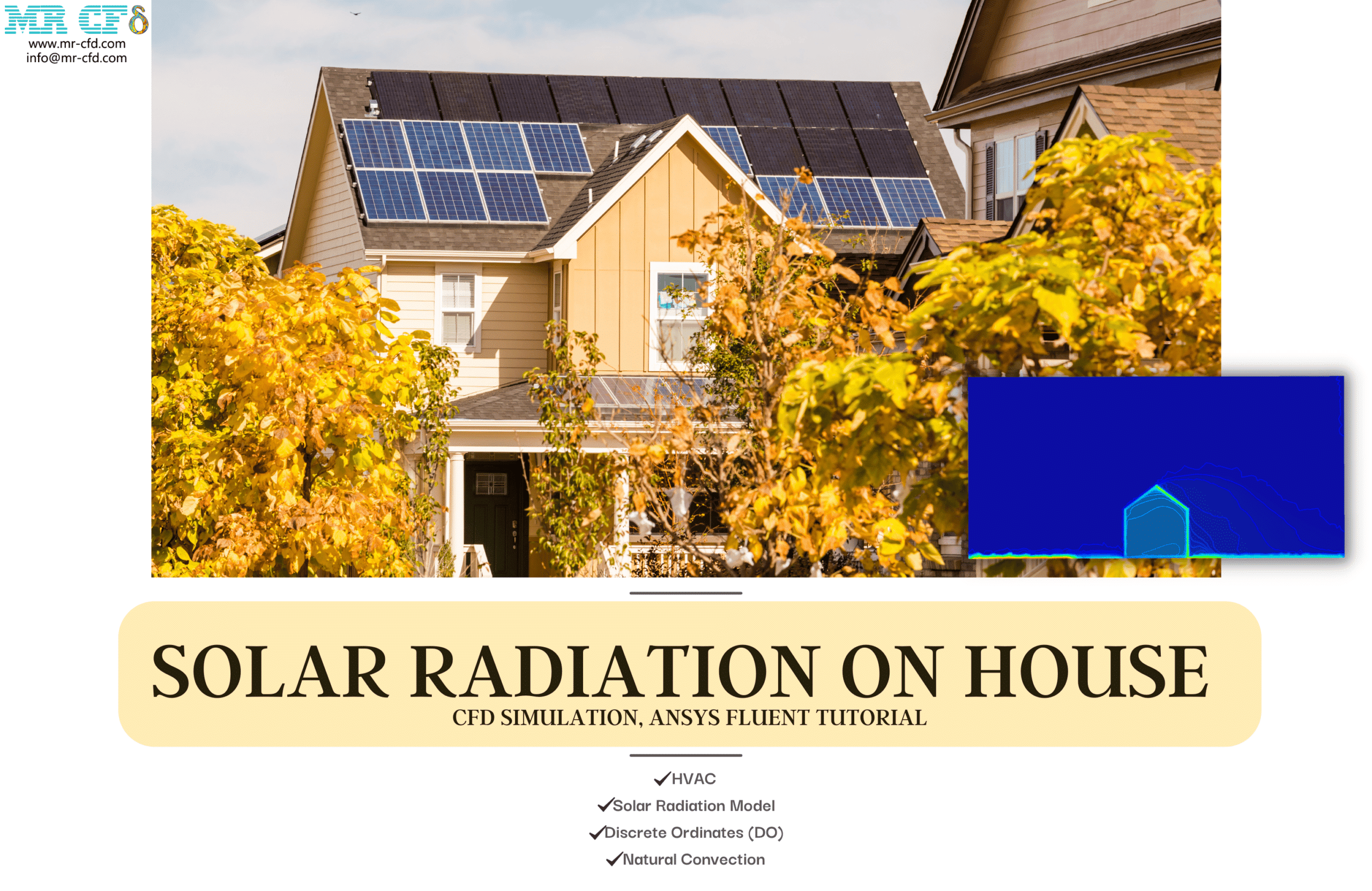
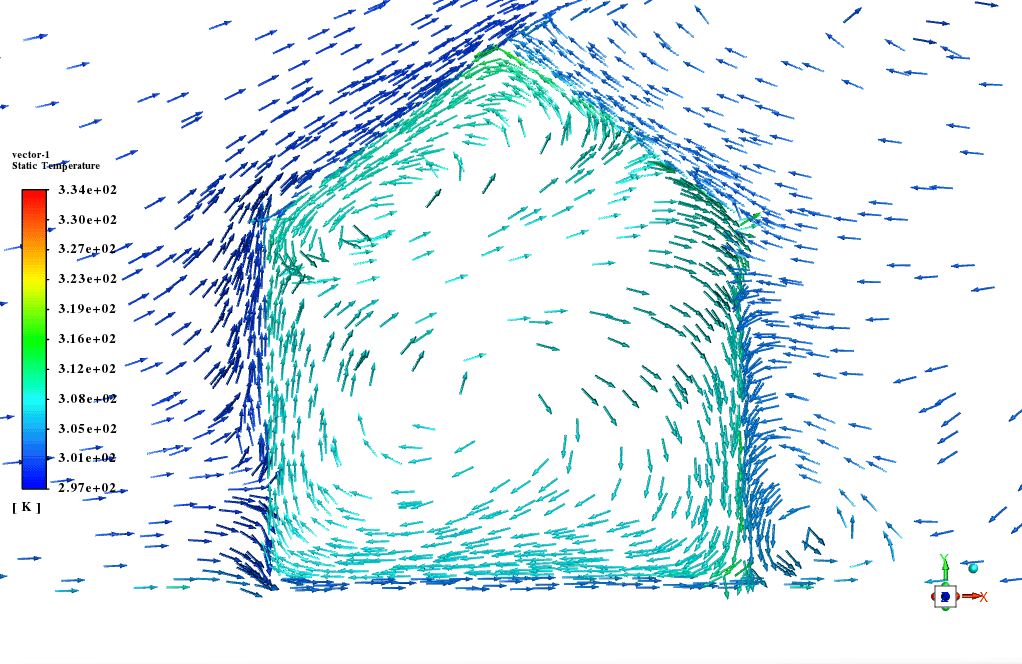
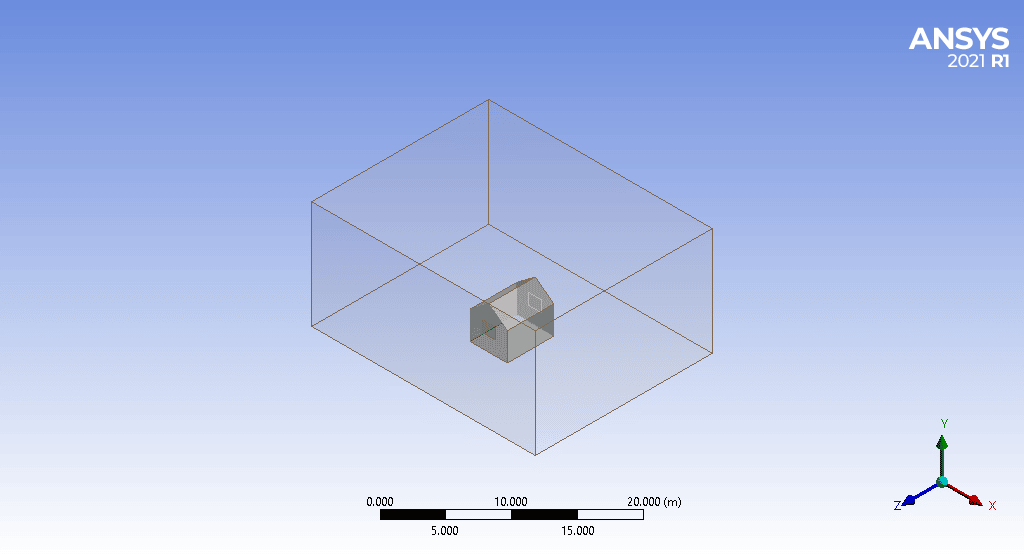
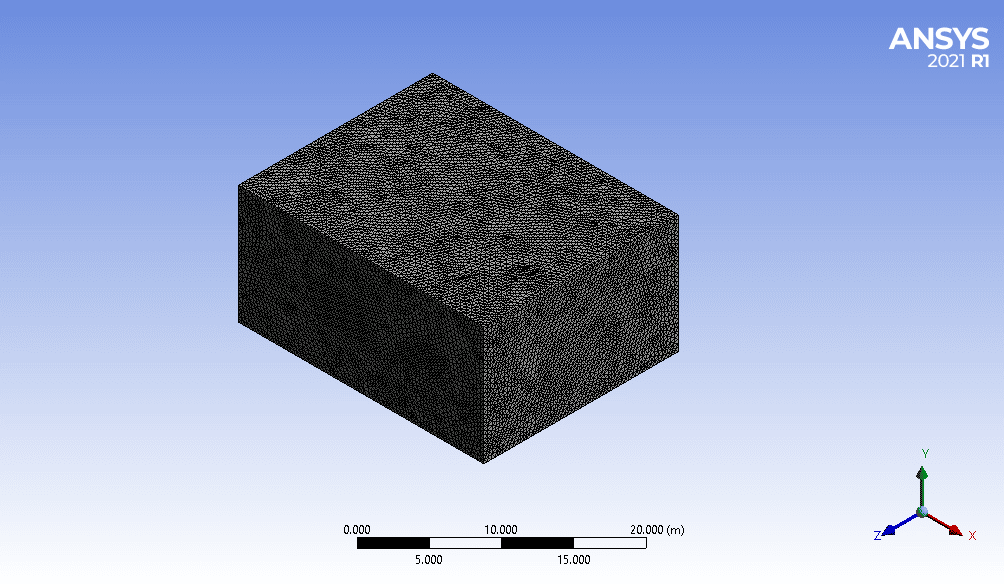
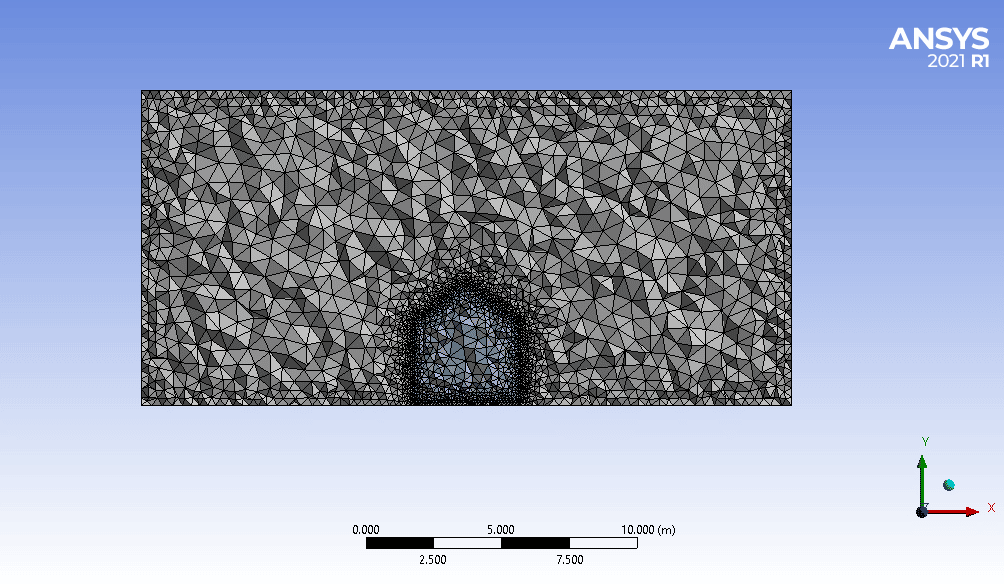
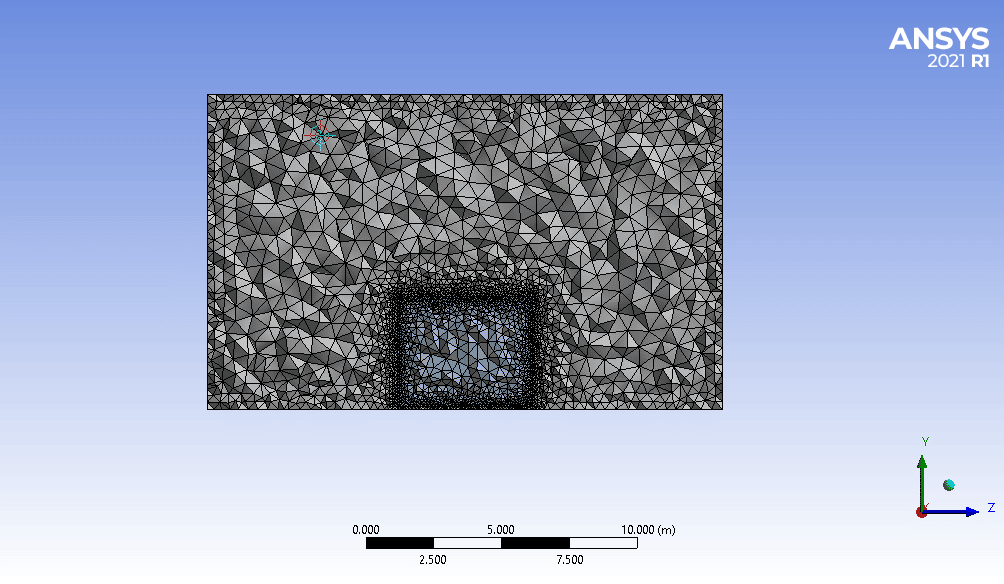

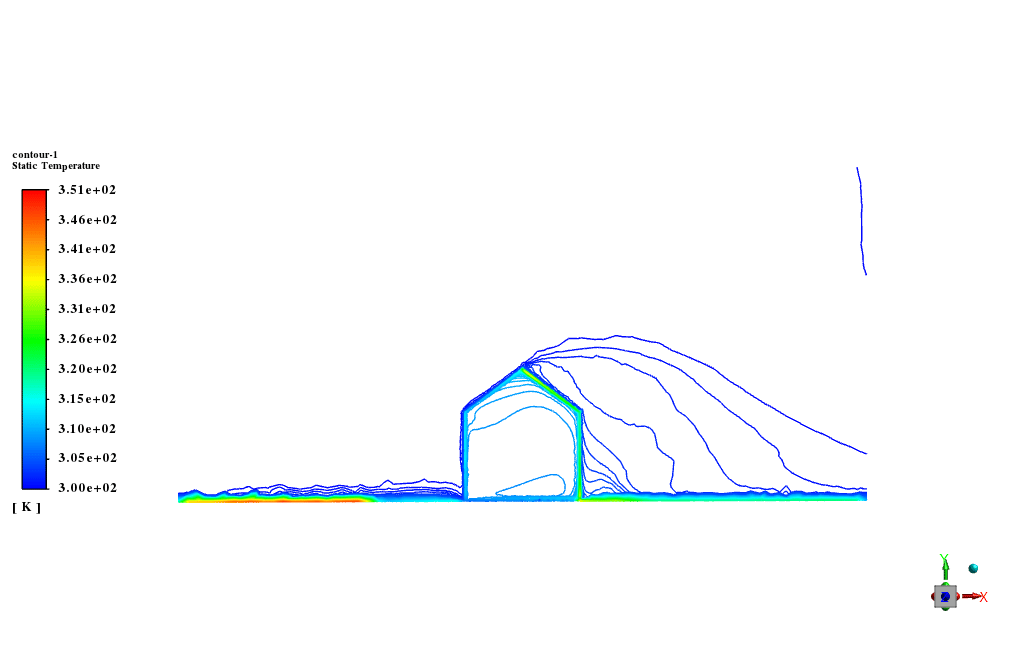
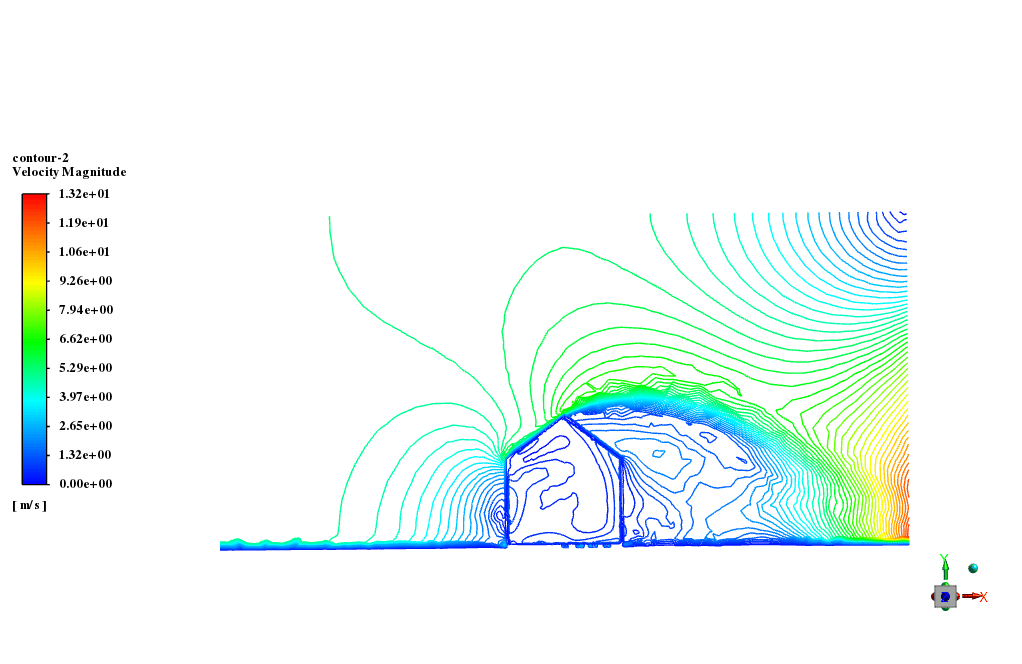
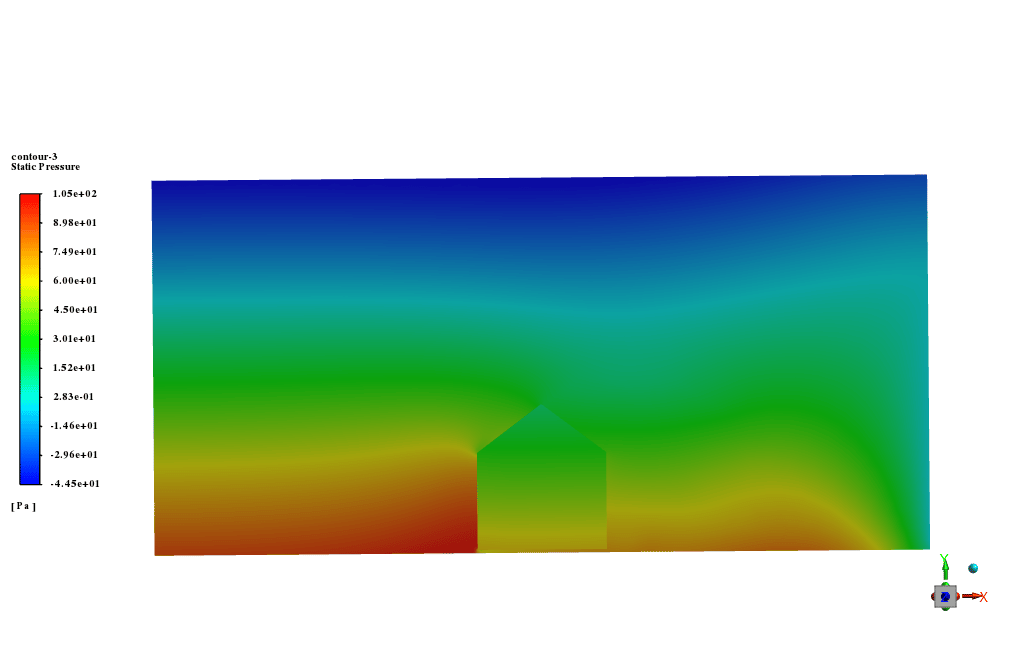

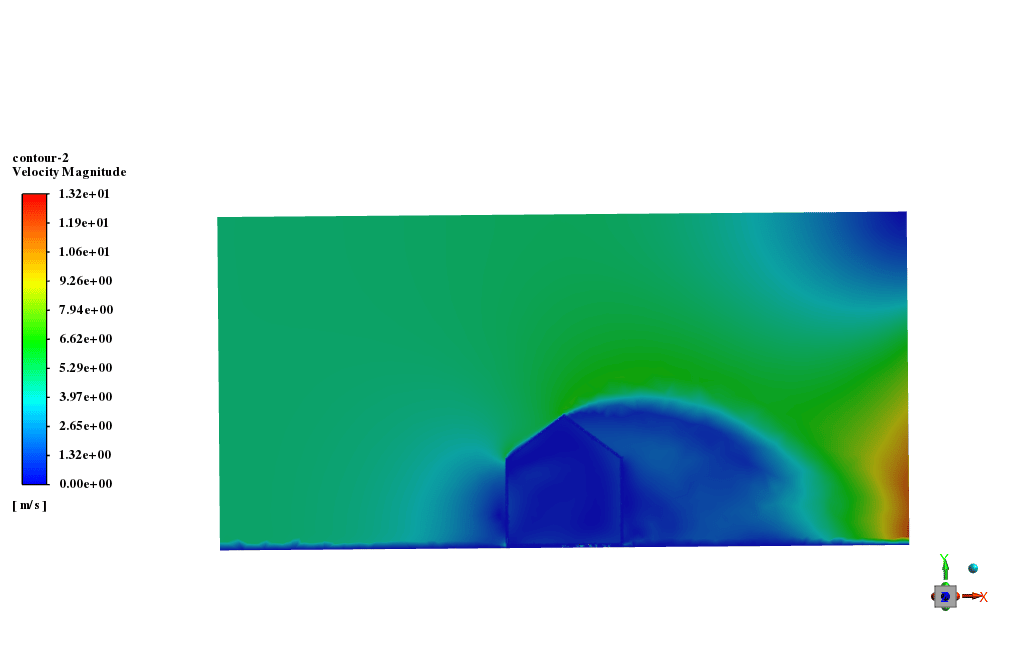
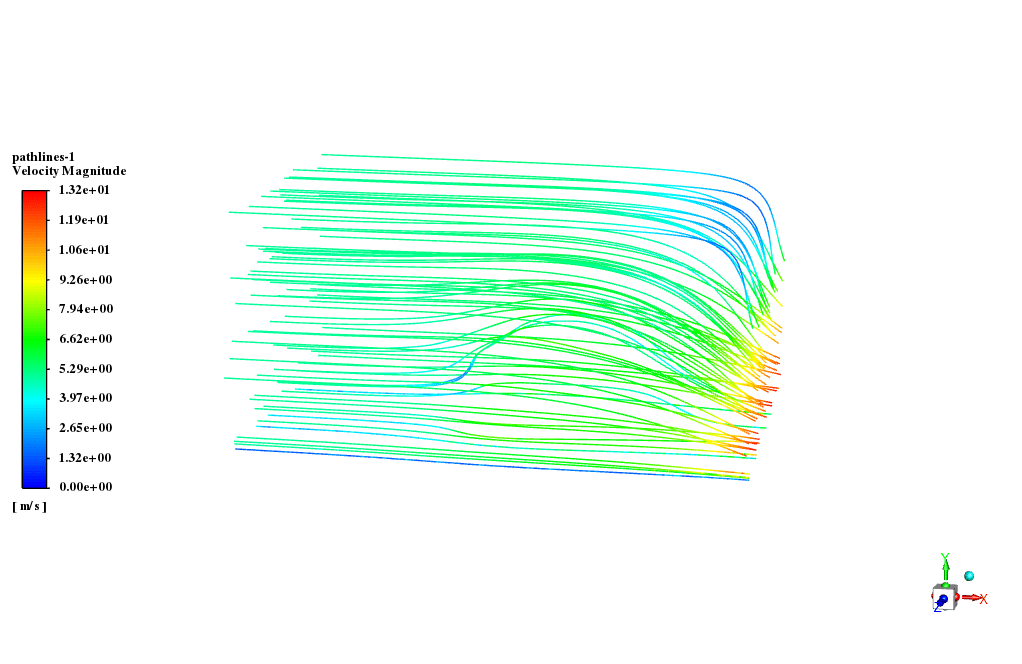
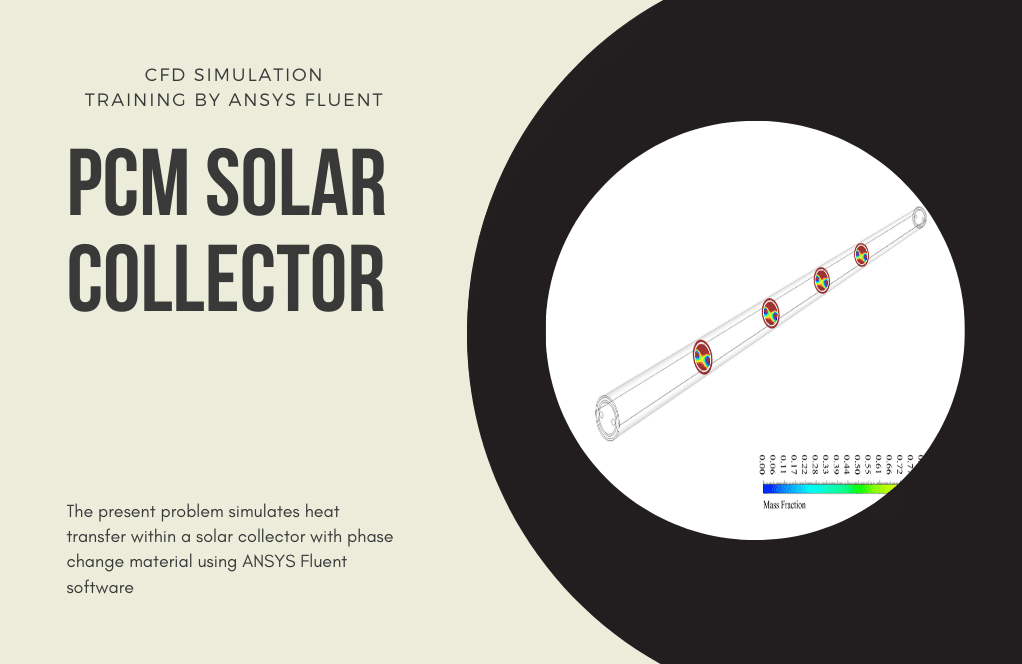

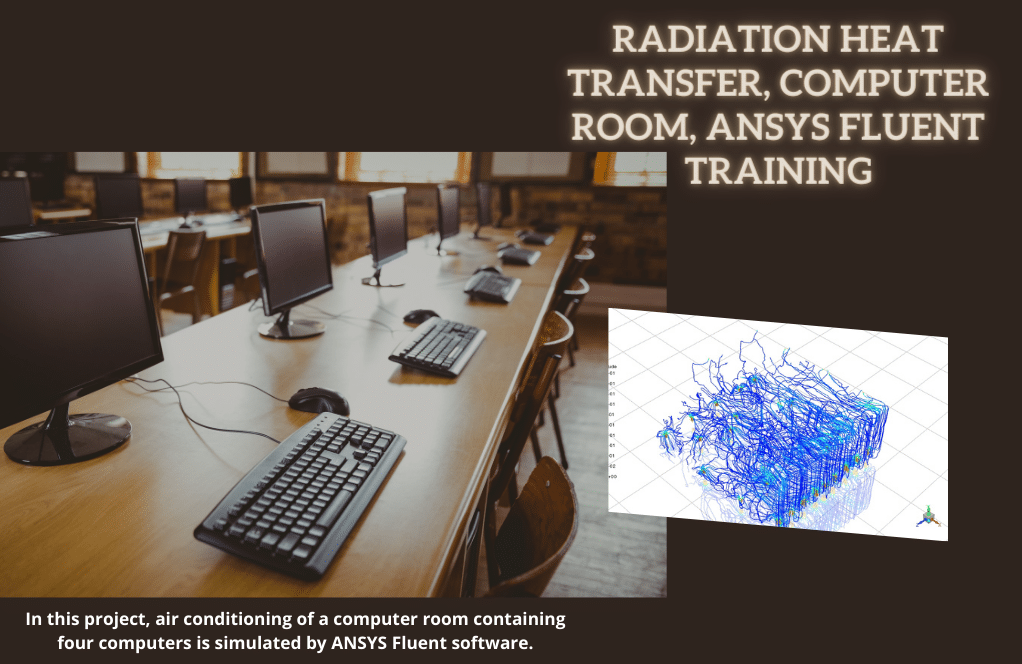
Gwen Schneider I –
Great project! It was fantastic to see how the solar radiation and wind interaction influenced the indoor and outdoor temperature distribution. The simulations’ ability to capture convection currents and the effect of shadows was insightful. The use of pixelation provided a great balance between accuracy and computational efficiency. Looking forward to applying this understanding to my own energy-efficient home designs.
MR CFD Support –
Thank you for your positive feedback! We are delighted to hear that you found the simulation and results insightful and that they could potentially contribute valuable insights to your energy-efficient home designs. Your understanding of balance between accuracy and efficiency is quite on point. It’s great that you can use this knowledge practically and we’re proud to support your future projects. Let us know if you have any further questions or need assistance with your ventures.
Mr. Buck Mertz –
This tutorial helped me understand the impact of solar radiation on a house’s internal temperature in a very engaging manner. Seeing the temperature contours inside and around the house and how the sun’s position influences the air movement was particularly insightful. Thank you for providing a hands-on example of how the Discrete Ordinates model works in simulating these effects.
MR CFD Support –
Thank you for your positive feedback! We’re glad to hear that the Solar Radiation on House CFD Simulation tutorial was insightful and helped you grasp the details of solar effects on thermal conditions in residential structures. It’s always rewarding to know our products are helping users understand complex processes with real-world applications.
Orlo Muller –
Fantastic learning experience! The step-by-step methodology helped me comprehend how solar radiation impacts a house with changing environmental conditions. Seeing the actual wind and temperature interactions in the simulations was enlightening. I particularly appreciated the detailed explanation on the use of the Discrete Ordinates (DO) model and the effects of pixelation on computation cost and accuracy. Well-organized and informative tutorial!
MR CFD Support –
Thank you for your thoughtful review! We’re thrilled to hear that the tutorial on the effect of solar radiation on a house was both informative and enlightening for you. It is great to know that the step-by-step methodology and the detailed explanation on the DO model and pixelation were particularly helpful. We appreciate your feedback and are glad that you found the tutorial well-organized. If there’s anything else you’d like to learn about or any other aspect you’re curious about, please feel free to ask. Happy learning!
Richard Schamberger –
The detailed analysis of the solar radiation impact is fascinating. I’m quite impressed with the incorporation of natural convection and the role of buoyancy in this simulation. The wake formation and shadow effect details were particularly evocative and appreciated.
MR CFD Support –
Thank you for your positive feedback! We’re delighted to hear that the inclusion of complex phenomena such as natural convection, buoyancy effects, and the shadow and wake analysis provided a comprehensive understanding of the solar radiation’s impact on the house. We work diligently to ensure the realism and detail in our simulations meet our customer’s expectations, and we are thrilled when it is recognized. We appreciate your thoughtful review and look forward to bringing you more insightful CFD projects.
Ms. Billie Corwin –
The realistic approach to simulating the solar radiation effects in this project is impressive. Being able to see the difference in airflow and temperature distribution because of various environmental factors offers insightful data for efficient house design. The detail about the wake of the house and the influence of buoyancy on internal air movement highlights the quality of the simulation. Great job MR CFD!
MR CFD Support –
Thank you for your positive feedback! We’re delighted to hear that the CFD simulation’s realistic representation of solar radiation effects and environmental impacts offered you valuable insights. Your appreciation motivates us to continue delivering high-quality and detailed analyses in our simulations. We look forward to providing more learning products that exceed your expectations.
Dr. Reanna Lesch –
I purchased the Solar Radiation effect on a House CFD Simulation tutorial and followed the steps closely. The results are impressive! I’m particularly interested in how solar radiation varies the temperature inside the house. Your tutorial made it easy to follow, and I observed similar patterns in temperature variation. The mean temperature trend near the ceiling was especially intriguing. Kudos to the team for creating such a detailed and helpful guide!
MR CFD Support –
Thank you so much for your positive feedback! We’re thrilled to hear that our tutorial was insightful and that you were able to observe the significant effects of solar radiation on the temperature inside the house. Understanding the interplay between solar heating and internal airflow is essential for many engineering applications, and we are glad that we could assist you in grasping this complex process. If you have any more questions or need further assistance in your simulations, don’t hesitate to reach out to us. Your success is and always will be our top priority!
Deonte Sanford –
The training course seems comprehensive! Could we also learn to customize the emission spectrum of the solar radiation to simulate different times of day, or is it fixed to a specific spectrum setting in the examples provided?
MR CFD Support –
Thank you for your wonderful feedback! In the course, learners are introduced to setting up solar radiation configurations, including the emission spectrum. While the example provided focuses on specific settings, the course teaches concepts that allow users to customize various parameters. You could indeed modify the emission spectrum settings in ANSYS Fluent to simulate different times of day by altering the solar load and direction to reflect the sun’s position. Detailed instructions on how to replicate these conditions should be part of the training material to assist you in achieving realistic simulations.
Dr. Abelardo Nolan –
I’ve found the explanation of the influence of wind direction on the solar radiation effect very informative. Impressive work on the detailed simulation process!
MR CFD Support –
Thank you for your positive feedback! We’re glad to hear that our simulation has provided valuable insights into the effects of wind direction on solar radiation. Our team strives to deliver detailed and comprehensive simulations to support learning and application. If you have any more questions or need further information, don’t hesitate to reach out!
Prof. Justyn Kiehn Jr. –
The simulation results for the shadow effect on the ground from the house were enlightening, demonstrating how environmental factors can significantly impact temperature distribution. Great tutorial for understanding solar radiation impact in real-world scenarios!
MR CFD Support –
Thank you for your positive feedback! We’re delighted to hear that the tutorial helped in understanding the complexities of solar radiation and its effects on temperature distribution around structures. Your appreciation motivates us to continue delivering high-quality and informative simulations.
Dr. Mariane Huel –
I’m curious about the influence of wind direction and speed in the solar radiation simulation. Could you explain how these factors were taken into consideration during the analysis?
MR CFD Support –
In the simulation, wind direction and speed are critical environmental aspects that can influence the convection rates and temperature distribution around and within the house. The wind enters the domain from one side, which has been set up in ANSYS Fluent to reflect a certain speed and direction consistent with the typical conditions that were intended to be studied. This wind alters the pattern of air flow both on the exterior and within the house, contributing significantly to heat transfer through forced convection. Computational parameters are adjusted to ensure that the effects from both solar radiation and wind-induced convection are accurately captured in the simulation results.
Lessie Dooley –
I recently completed the ‘Solar Radiation on a House CFD Simulation’ tutorial and was fascinated by the wake formation and the temperature patterns. I learned so much about how solar radiation and airflow affect the inside of a house differently throughout the day. Amazing work on crafting such an insightful simulation, a fabulous learning tool!
MR CFD Support –
Thank you so much for the wonderful review! We are thrilled to hear that our ‘Solar Radiation on a House CFD Simulation’ tutorial provided you with valuable insights into the thermal dynamics of a house under the effects of solar radiation and airflow. Your appreciation means a lot to us, and we are delighted that the knowledge gain was significant for you. If you have any more questions or if there’s something else you would like to learn, please don’t hesitate to reach out. We’re always here to help!
Lazaro Streich –
I found the way that solar radiation effect is modeled in this CFD Sim to be fascinating! It really adds a layer of realism to see how different times of day affect temperature,
MR CFD Support –
Thank you so much for your kind words! We’re thrilled to hear that the level of detail in our solar radiation on a house CFD simulation added value to your learning experience. Realism in simulations is crucial for understanding and predicting real-world phenomena, and we’re glad it resonated with you!